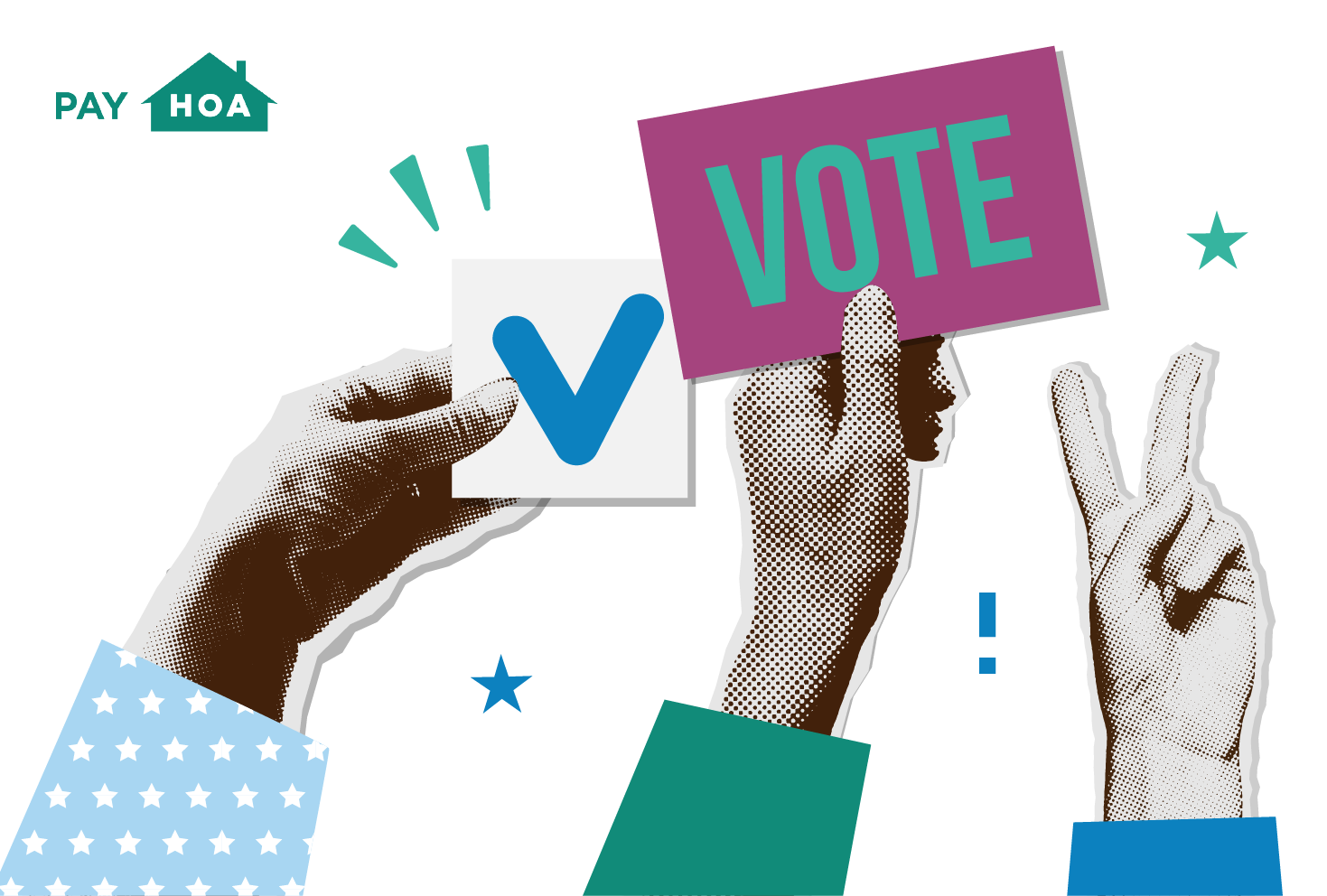

5 Digital Registration Tips for Smoother Event Organization


Barbecues, birthday parties, fundraisers — community events are a bonding experience that bring the members of your homeowners association together. Whether your event is large or small for the sake of saving money, you’ll need a structured process for staying organized and keeping track of your event’s attendees.
Online and digital registration technology has come a long way, providing your homeowners association with valuable tools for checking in guests before your events. However, purchasing digital registration software and knowing how to use your new solution to create a smooth registration process are two different things.
To help your homeowners association set up an organized, reliable digital registration process for your events, this guide will share five tips that can help you make the most of your registration software, including:
- Optimize your registration forms.
- Streamline your registration process.
- Make your registration forms accessible.
- Integrate your forms with your tech stack.
- Use analytics tools to track your guests’ registration process.
As you organize your event, keep in mind your event’s purpose. There will rarely be a time when you host an event for the sake of it, so set a concrete goal for each of your association’s events. Then, use your registration tools to help you meet that goal from the beginning to the end of your event.
1. Optimize your registration forms.
Your event starts when guests first reach your event registration form and decide whether or not to fill it out. With RegPack, you can embed your registration forms on your HOA’s website, send them out in an email, or host them within the PayHOA platform. You can increase the number of people who complete your entire registration process by optimizing your forms for convenience. Show your guests that you value their time by creating event forms that:
- Are no more than a page in length. Long forms can seem like more effort than they’re worth to fill out. Hold your guests’ attention and make your registration process short and easy by limiting your main registration form to a single page in length.
- Ask only necessary questions. It may be tempting to use your registration process as an opportunity to learn more about your members and collect additional data. However, guests may question the purpose behind unrelated questions and decide not to fill out your registration form.
- Limit data re-entry. Keep repetitive questions to a minimum. Look for potentially repetitive entry fields such as requests for contact information or emails, which your association is likely to have already. Plus, if your homeowners’ association has members create profiles, integrate your registration software so some fields will fill in automatically.
With all of these recommendations in the name of convenience, you may feel handcuffed about what you can ask guests for during the registration process. If you have additional questions or opportunities you want to present to guests, consider directing guests to them from the confirmation page after they finish their initial registration form.
2. Streamline your registration process.


Even simple registration processes can sometimes get overwhelming, especially if they have several parts. Fortunately, you can continue providing your members with a convenient digital registration experience by streamlining your registration process. Doing so will save your members time and provide benefits for your association.
Here are a few ways you can maintain a smooth registration process, reduce support cases, and stay organized:
- Use conditional logic forms. If you do need to ask your guests multiple questions, consider using a registration form with conditional logic features. Conditional logic uses guests’ previous answers to determine which questions they get shown next, eliminating questions that are unnecessary or irrelevant for the specific user filling out the form. For example, if you ask whether or not registrants have food restrictions, you might add another question asking for details for the answer “yes” while those who respond “no” can move onto the next question without being shown the prompt to provide details.
- Accept multiple types of payment. If your event has fees, make sure you’re able to accept multiple payment methods. Regpack’s guide to accepting payments online explains that organizations should have payment processors that accept credit and debit cards, eChecks/ACH, and reward cards. You’ll also want to make sure you have a comprehensive understanding of the different processing fees of each payment type and be transparent about them with attendees.
- Brand your forms. Members of your homeowners association may be hesitant to give out personal details such as their address, contact information, and payment information online. Ensure they feel secure by clearly labeling all of your registration forms with your HOA’s logo. Or, embed your forms directly into your website to create an uninterrupted registration experience. This shows registrants that they’re not being directed to a third-party or untrustworthy system.
During the registration process, guests will likely have questions about signing up online. By following these practices you can answer many of these questions during your registration process, minimizing the number of one-on-one conversations you’ll need to have with concerned or confused guests.
3. Make your registration forms accessible.
Make sure every member of your homeowners association can complete your registration process by following web accessibility guidelines. While many web accessibility best practices have been standardized across CMS website templates, registration forms have a few specific hurdles that will need to be taken into account.
DNL Omnimedia’s guide to web accessibility explains a few key accessibility practices to keep in mind for your registration forms:
- Instructions should include text directions. Directions that rely solely on visual indicators such as color or position on the website are unfriendly for visitors using assistive technology such as screen readers. For your registration forms, this means providing an additional way outside of color to mark required fields such as an asterisk or text description.
- Entry fields should be labeled outside of the field. All of your forms’ information fields should be clearly labeled with directions outside of the text field. This ensures that when guests start inputting their answer, the directions will still be accessible, helping guests using screen readers as well as those who may step away from their computers while registering.
- All user errors should be explained in text. If a user enters something incorrectly on your form, make sure text directions will appear explaining what the error is. Marking incorrect fields only with color or an error message will force some users to guess what the problem is, wasting time that could otherwise be spent resolving the issue.
In addition to making your digital registration process as accessible as possible, consider offering in-person registration options for guests at your event. Some homeowners associations might use kiosks, while others might decide to print out copies of their registration form for walk-ups and those who had trouble accessing the online version.
4. Integrate your forms with your tech stack.
Anytime you use or adopt a new tech tool, it should help streamline the flow of data and information. Your registration forms are no exception and can provide valuable insight into your members when used in conjunction with your HOA accounting software.
Look for registration software that prioritizes flexibility and integrations. Registration forms that work with third-party integrations will allow you to customize your registration process further by adding unique features, questions, and layouts. Plus, the information collected in your forms can then be shared across multiple software solutions automatically, reducing the need for manual data entry.
When investing in a new registration software solution, conduct a trial run to ensure data is flowing from your forms to your main information base without interruptions. Add filling out your registration form and checking for errors to your regular software maintenance routine to ensure your members never experience a disruption when using your registration forms.
5. Use analytics tools to track your guests’ registration process.


When users navigate to your homeowners association’s website, they often have a specific goal or task in mind. For example, here are a few common tasks you can expect many users to have: reviewing your neighborhood policies, paying membership dues and checking their balance, and (of course) signing up for events.
Once you identify a few common tasks like these, you can use your web analytics tools to create set goals for visitors to your website. Then, you can monitor the steps users took to complete their goal. This allows you to better understand how your users interact with your website and registration form as well as if there are any places in the process that see significant dropoff.
As you analyze the results of your guests’ registration process, look for the following common causes for abandoned or incomplete registration forms:
- Poor website navigation. View which links guests are clicking on as they navigate your website. This is especially important for homeowners association’s that provide members with self management software, as they’ll need to navigate your website to complete vital tasks such as paying membership dues. If you notice guests backtracking often or using your search tool to find key pages, you may need to rework your navigation.
- Lengthy registration forms. As mentioned, long registration forms can often lead to guests abandoning the form and the following event altogether. If you have a multi-page registration form, you will likely see guests drop off between pages.
- Distracting pages. Analytics tools allow you to measure your traffic and visitor duration time on your website. In some cases, you might find users deviating from what you feel should be the most direct route for completing a task by visiting unnecessary pages. Why this happens will vary from organization to organization, so be on the lookout for unnecessary detours that stop your guests from attending your event.
Use your analytics tools to set up several goals related to your event ahead of time, such as navigation to your event’s information page, your calendar, and your registration form. From there, you’ll be able to get a comprehensive picture of how guests are using your website and registration forms, allowing you to streamline the process in the future.
Community events can get complicated, and it’s easy to become disorganized between checking in guests and planning the event itself. Make sure your homeowners association stays on top of key data from the very beginning by implementing these digital registration best practices and investing in the tech tools you need to create a better experience for your team and your community members.
PayHOA offers an HOA management software solution for HOAs of any size or managerial priorities. To find out if PayHOA fits all your HOA management needs, try our software free for 30 days.
Enjoyed this Article? Try Another!
How Self Managed HOA Software Makes HOA Elections Simple
Key Takeaways: HOA elections are a critical part of any homeowners association, especially in self…
The ROI of Investing in HOA Management Software
Key Takeaways: If you serve a local HOA as a leader or volunteer, you know…
Neighborhood Collaboration Made Easy with HOA Software
The leaves are changing, the air is crisp, pumpkin spice is everywhere — and suddenly,…


